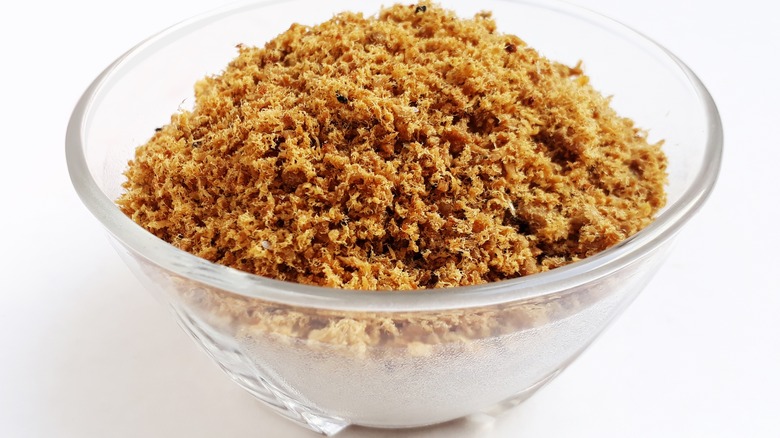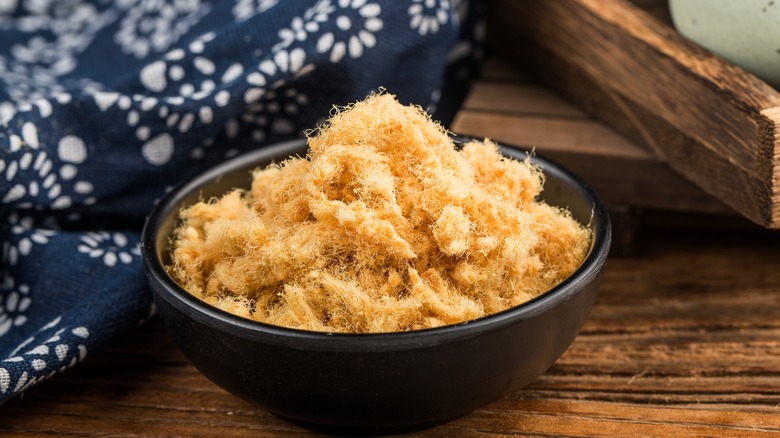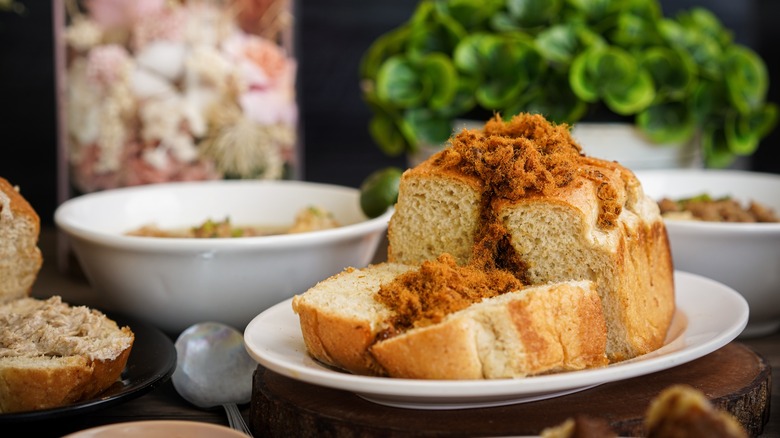What Is Pork Floss And How Do You Use It?
Imagine biting into something with the light, airy texture of cotton candy, but instead of overwhelming sweetness, you're met with an explosion of savory, sweet, and umami goodness. That's the magic of pork floss, or rousong, a beloved condiment in many Asian kitchens.
Its unique texture — at once both soft and crunchy — makes it an incredibly versatile ingredient that enhances nearly any dish. Whether sprinkled on a simple shrimp congee, stuffed into soft bao buns, used as a topping for rice bowls (it pairs beautifully with eggs that have golden, jammy yolks and pickled vegetables), or used in a pork belly onigiri recipe, trust pork floss to give your dish that instant flavor boost.
Pork floss is also the star of bánh tráng nướng, or Vietnamese pizza, where crispy rice paper is slathered with sweet chili jam, eggs, and green onions, and then finished with generous amounts of pork floss. With its ability to add a hint of meatiness while keeping dishes light, pork floss offers endless possibilities for culinary creativity.
Pork sung versus pork fu
Pork floss is widely available in most Asian grocery stores where you'll find several competing commercial brands. It is made by simmering lean pork in a broth with aromatics as well as dark and light soy sauce until the meat is fork-tender. The pork is then shredded and cooked in a pan with oil until it achieves its characteristic fluffy, cottony texture.
Among the available variants, pork sung and pork fu are the most common. Both are shredded and dried, but they differ in texture and flavor. Pork fu is less fried, resulting in larger and fluffier pieces and a lighter color. This type works well as a topping for rice porridge, as it readily absorbs the porridge's moisture and flavor. On the other hand, pork sung is fried longer, making it more compact with a slightly more intense flavor. It is drier and is ideal for use in sandwiches or bao buns where its stronger flavor and chewier texture can really shine.
Get creative with pork floss
Though pork floss originated in China, it has spread across Asia and found its place in a variety of modern cuisines. Whether you prefer the chewy texture of pork fu or the crispy, melt-in-your-mouth quality of pork sung, pork floss adds unique versatility and a hint of meaty goodness to any dish.
In creamy pasta dishes, pork floss introduces a savory note that enhances the butteriness of the sauce — try it in carbonara where its umami flavor complements the pancetta while providing a delightful textural contrast. You can also reinvent your sandwiches by swapping out deli meats for pork floss or, better yet, adding it alongside your favorite cold cuts. There's nothing quite like the indulgent combination of soft white bread filled with thick slabs of bologna, luxurious kewpie mayo, crisp cucumber slices, and a generous helping of pork floss.
The same principle of enhancing sweet and savory notes while adding a satisfying bite makes it an excellent addition to your go-to salad recipes — whether that's a basic Caesar salad or a mung bean potato salad. For a creative twist, try baking with it — Swiss rolls filled with pork floss blend the milky sweetness of chiffon cake with the savory notes of the floss, creating a match made in flavor heaven. Wherever your culinary imagination leads, let this humble ingredient elevate your dishes.



